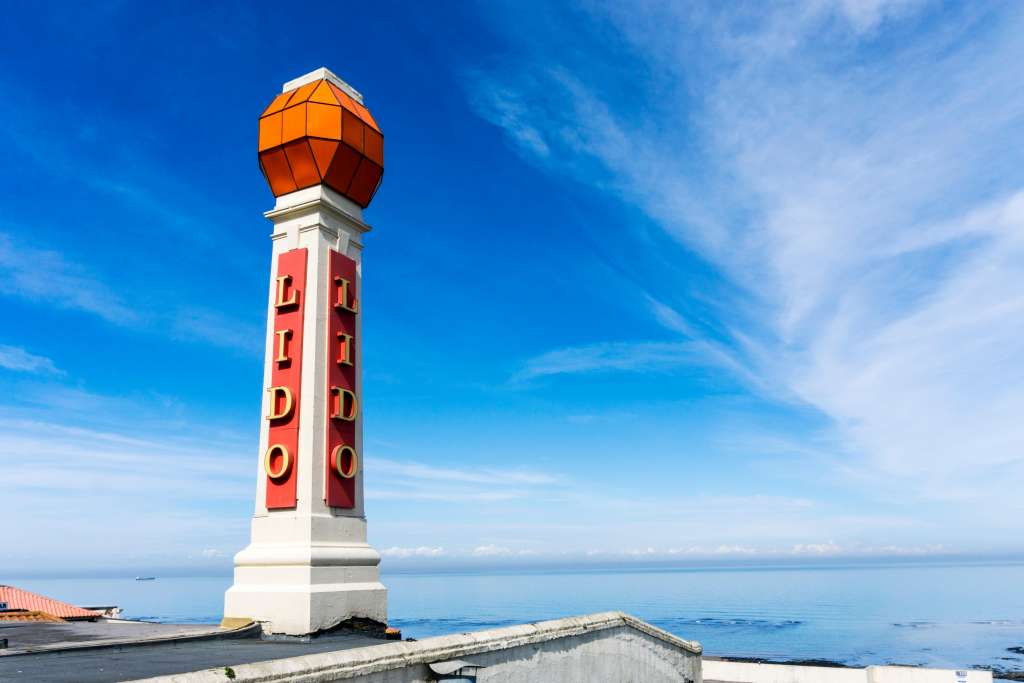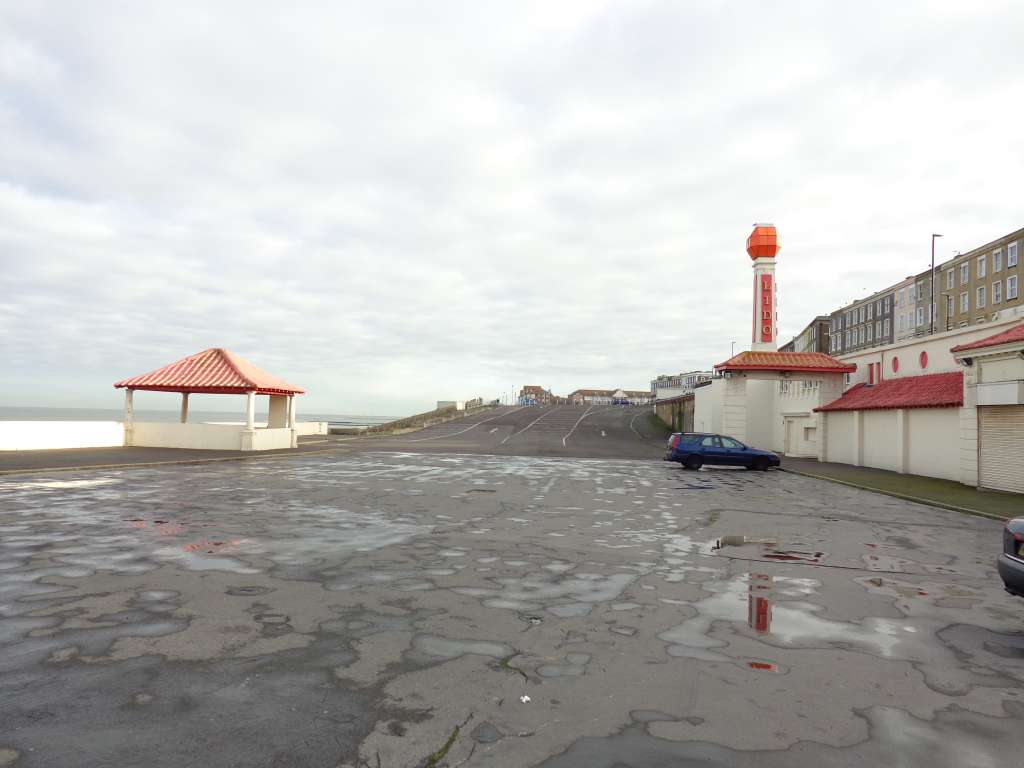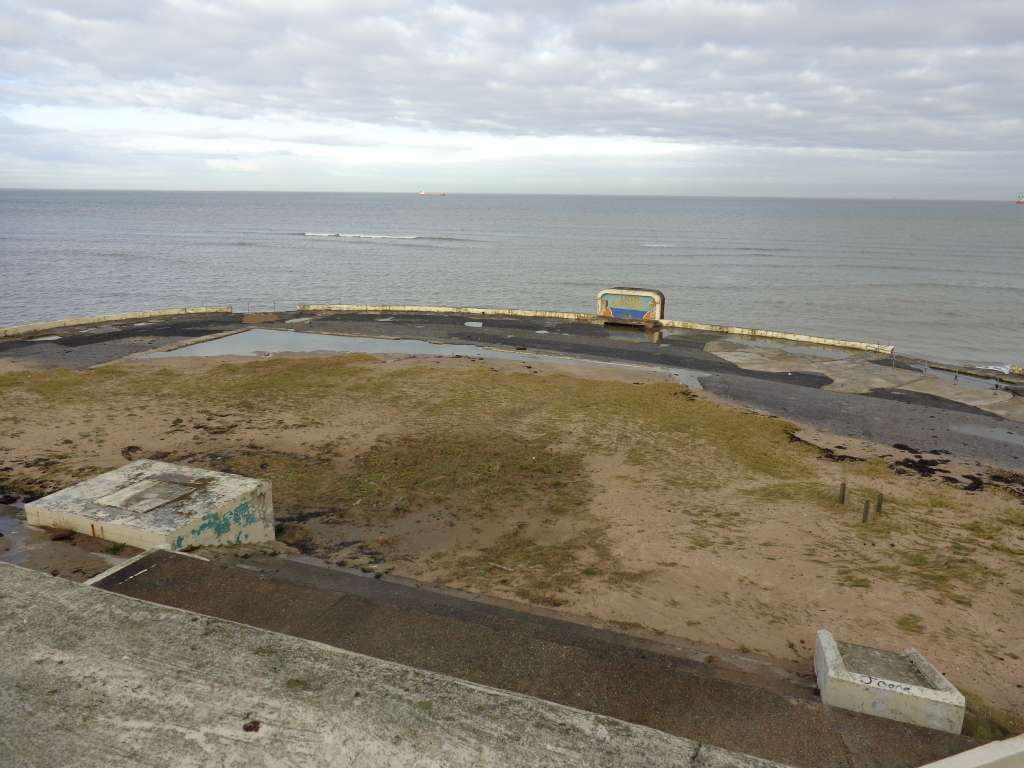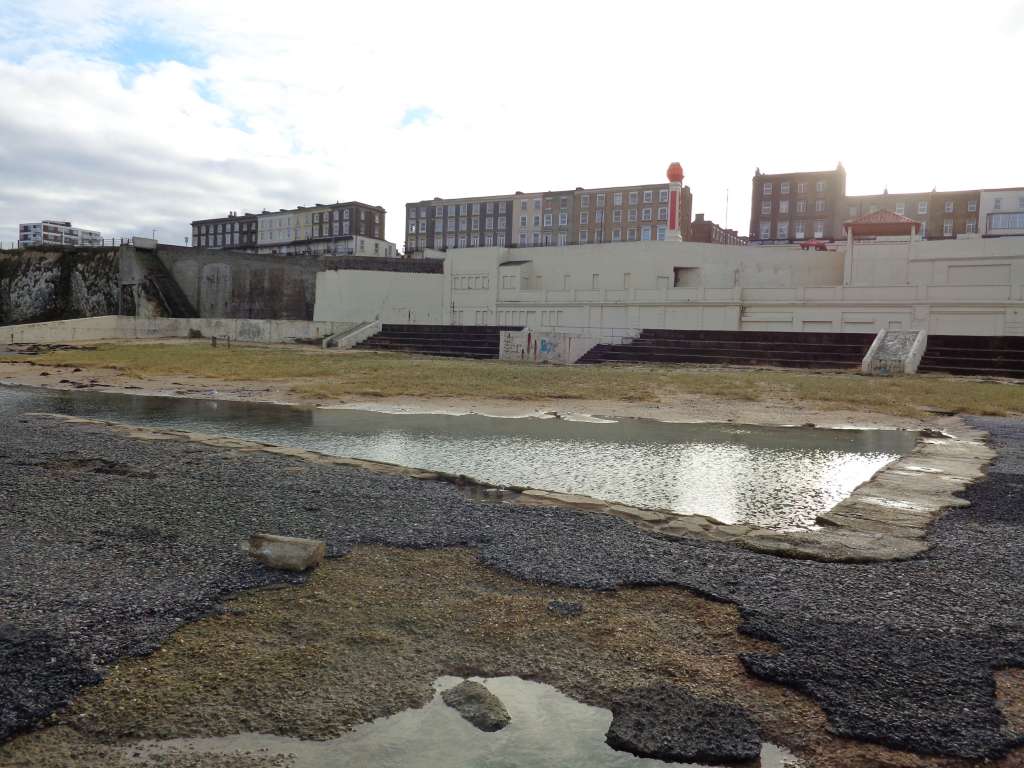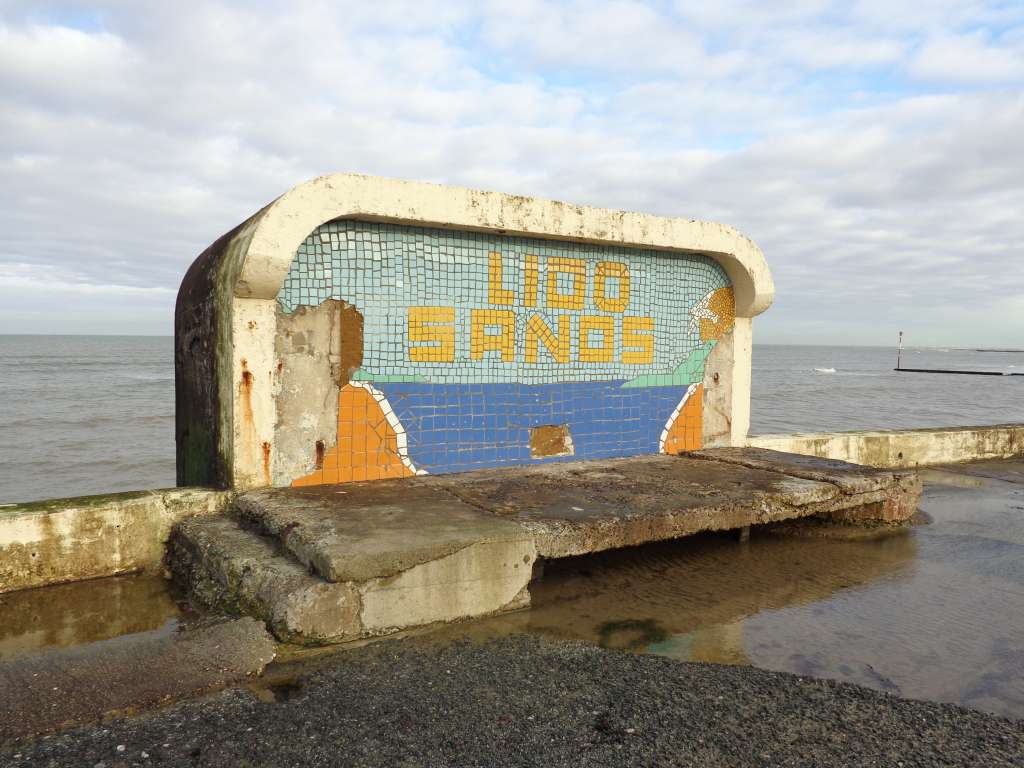Building of the Month August 2021: Cliftonville Lido, Margate, Kent
Cliftonville Lido in Margate is a 1920s seafront Lido. Despite having been disused for years, it still communicates a jauntiness with bright red roof tiles, porthole windows and the distinctive four-sided ‘Lido’ beacon.
The Lido was built by John Henry Iles from 1926, creating a modern leisure complex with terraces for sunbathers, cafes, restaurants and a pool stretching out towards the sea. He was also the creator of Dreamland, Margate’s celebrated pleasure park.
The Lido remained a vibrant part of the town until the 1970s, when it was last used as a disco. The swimming pool (where artist Tracey Emin reputedly learnt to swim) was finally shut in the 1980s.
But the unlisted Lido, rather remarkably conceals an earlier swimming establishment. It was built on top of grade II listed Clifton Baths which date from 1824-28, making it one of the earliest surviving seawater bathing establishments in the country according to the listing entry. It has what is thought to be the earliest surviving seawater plunge baths and is the only known place of its type to have been dug out of the cliffs. Originally there was a domed, circular chamber where the sea bathing machines used to take bathers to the sea were brought up from the beach to be stored. The chamber survives but the dome was lost – together with other elements of the original - when the 1920s Lido was constructed on top of it.
The Lido is now in private ownership although the pool is council owned and there have been previous proposals to put residential accommodation on this prime site so close to the sea.
However, in 2019, a local group wanting to save the Lido and bring it back into use as a swimming and leisure complex, began to clear the site, with the permission of the owners and in co-operation with Thanet Council and Historic England. The Council used funds from the Government’s Coastal Revival Fund to enable this.
This allowed a comprehensive inspection of the site which has produced a huge amount of information about the condition and history of the site. The intention had been to present this information to the community, wider public and other bodies to prompt a full debate about how to bring the Lido back into use, but lockdown intervened and this never happened. New momentum is needed if this excellent idea is to progress.

